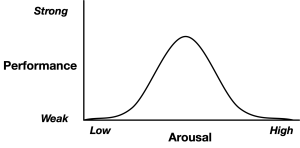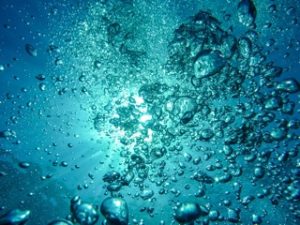Emotion matters. Yes, largely it’s a cultural construct, as Lisa Feldman Barrett tells us. Still, they can help or hinder learning. When designing games or creating meaningful learning, they matter. But they also affect us in our daily activities.
So, my previous post, on misinformation, is personal. I’ve frustration that family members are buying into some of it. I try to maintain a calm demeanor, but it’s challenging. Still, it’s a battle I’ve not yet given up on. Yet, I’m also not immune to the larger effects of emotion.
 What we know, from the Yerkes-Dodson Curve, is that a little bit of arousal (read: emotion) can help, but too much can hurt. What isn’t clear from my conceptual rendering is what amount is the ‘right’ amount of arousal for optimal performance. I’ll suggest that for learning, it’s pretty low, as learning is stressful (another synonym for arousal). And I do suggest we manipulate emotions (which I admit is shorthand for motivation, anxiety, and confidence, which aren’t the regular definition) to successfully achieve learning outcomes.
What we know, from the Yerkes-Dodson Curve, is that a little bit of arousal (read: emotion) can help, but too much can hurt. What isn’t clear from my conceptual rendering is what amount is the ‘right’ amount of arousal for optimal performance. I’ll suggest that for learning, it’s pretty low, as learning is stressful (another synonym for arousal). And I do suggest we manipulate emotions (which I admit is shorthand for motivation, anxiety, and confidence, which aren’t the regular definition) to successfully achieve learning outcomes.
However, even general functioning gets difficult when things are stressful. When I look at the design of casinos, for instance, (a way to cope with the too many times I have to go to Vegas for conferences), I note that they deliberately have low information, lights, no clocks, as an information-sparse environment. It is deliberate, so that you’re more focused on the enticements. They want you confused because you’re then more vulnerable to predations.
I fear that there’s a bit of this in our culture. For instance, fear sells: more alarmist headlines lead to more engagement. Which is good for the news business, but perhaps bad for us in several ways. For one, there’s a vested interest in focus on the alarming, not the bigger picture. Similarly, twisting stories to get emotional engagement isn’t unknown. That can be entertaining, but when it’s the information we depend on is manipulated, it’s problematic. Reducing support for education similarly reduces the intelligence people can apply to analysis.
I struggled to focus to find a topic this week, and I realize it’s because of the informational turmoil that’s currently in play. So, I thought I’d write about it (for better or worse ;). Exaggeration of issues for the sake of clicks and sales, I’ll suggest isn’t a good thing. I’m willing to be wrong, but I worry that we’re over-excited. Our emotions are being played on, for purposes that are not completely benign. That’s a worry. That’s what’s worrying me, what about you?




